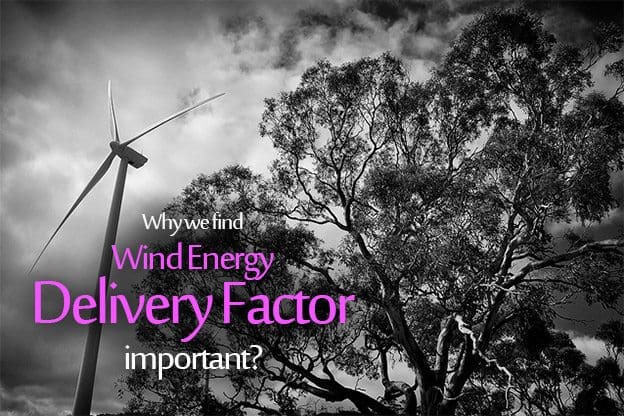Why we find Wind Energy Delivery Factor important?
Published on Apr 13, 2013 04:13 am by Edvard | Subscribe to Monthly Download Updates
Recommended - GE Transformer And Short Circuit Calculator (XLS)
Forward this article to your colleagues

Why we find Wind Energy Delivery Factor important? (photo by Bill Doyle via Flickr)
Economic Performance Measure
The key economic performance measure of a power plant is the electrical energy it delivers over the year. Not all power produced is delivered to the paying customers. A fraction of it is used internally to power the control equipment, meeting the power equipment losses and for the housekeeping functions such as lighting.
In a typical wind farm (or photovoltaic park as well), about 90 percent of the power produced is delivered to the customers, and the remaining is self-consumed for the plant operation.
The quantity of energy delivered depends on the peak power capacity of the site and how fully that capacity is utilized over every hour of the year.
The normalized measure of the power plant performance is the Energy Delivery Factor (EDF).
It is defined as the ratio of the electrical energy delivered to the customers to the energy that can be delivered by the plant if it could be operated at the fully installed capacity during all 8,760 hours of the year, that is as follows:

Since the load power varies over the time, the EDF takes the integral form:

where:
Pm – Plant capacity (the maximum power the plant can deliver)
Po – Power delivered to the customers at any time t
The EDF is usually determined by bookkeeping the sum of the energy delivered over a continuous series of small discrete time intervals, that is as follows:

where:
Pavg – average power delivered over the small time interval ∆t.
The EDF is a figure of merit that measures how hard the plant is utilized to deliver the maximum possible energy.
Not only does it include the energy conversion efficiencies of various components, it also accounts for the reliability, maintainability, and availability of the overall plant over the entire year.

Wind Farm in Cedar Creek, Colorado, USA (photo by BP Images via Flickr)
The EDF is useful in comparing the economic utilization of one site over the other, or the annual performance of a given site. Wind plants operate with the annual average EDF around 30 percent, with some plants reporting EDF as high as 40 percent.
This compares with 40 to 80 percent for the conventional plants. The base load plants operate at the higher end of the range.
The wind farm energy delivery factor varies with season and that must be taken into account.
Resource: Wind and solar power systems – M. K. Patel
Jump to original technical article at EEP - Why we find Wind Energy Delivery Factor important?
Category & Tags: Energy and Power, Wind Power, economic performance, edf, electrical energy, energy delivery factor, load power, power plant, wind
Subscribe to Monthly Download Updates
Recently published technical articles:
Share with your friends!


















